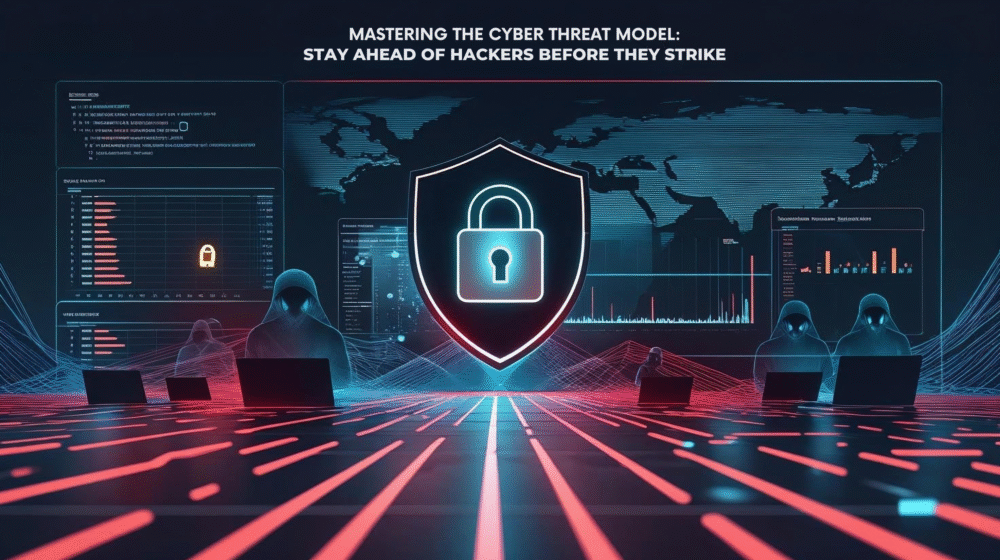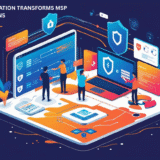In today’s digital-first world, cyberattacks are no longer a question of if, but when. From small businesses to global enterprises, every organisation faces growing exposure to cyber threats. One of the most critical ways to defend against these ever-evolving risks is by developing an effective cyber threat model.
A cyber threat model enables organisations to anticipate potential attacks, identify vulnerabilities, and build robust countermeasures—long before a threat actor strikes. It transforms cybersecurity from a reactive to a proactive discipline, allowing businesses to protect sensitive data, uphold customer trust, and maintain operational continuity.
What is a Cyber Threat Model?
A cyber threat model is a systematic approach to identifying and documenting the potential security threats that could impact your organisation’s digital assets. It helps predict how, why, and where cyberattacks could happen, using real-world attacker behaviour patterns.
Benefits of Developing an Effective Cyber Threat Model:
- Proactive Risk Management
Anticipates likely attack scenarios based on actual threat intelligence.
- Efficient Resource Allocation
Focuses defence efforts on the most vulnerable or valuable areas.
- Faster Incident Response
Helps teams detect, respond to, and recover from attacks quicker.
- Compliance Support
Aids in aligning with frameworks like ISO 27001, NIST, and the Essential Eight strategies.
Components of an Effective Cyber Threat Model
- Asset Identification
Pinpoint critical digital assets, including customer data, internal applications, and infrastructure. - Threat Intelligence Integration
Use data from platforms like MITRE ATT&CK and ENISA Threat Landscape Reports to understand current threat actors and tactics. - Attack Surface Mapping
Identify all digital entry points, including APIs, cloud services, third-party vendors, and legacy systems. - Vulnerability Discovery
Conduct regular vulnerability assessments using tools like Nessus or OpenVAS, and keep systems patched. - Threat Actor Profiling
Classify threats based on actor types—hacktivists, cybercriminals, and nation-state actors—using public advisories and intelligence feeds. - Risk Prioritisation Frameworks
Implement methods like STRIDE, PASTA, or DREAD to assess and rank threats based on likelihood and impact.
Best Practices for Developing a Cyber Threat Model
- Start Early
Integrate threat modelling from the planning and development stages of software and infrastructure projects. - Use Standard Frameworks
Leverage trusted models like MITRE ATT&CK, STRIDE, and PASTA to build a structured and effective cyber threat model based on proven threat analysis methodologies. - Automate Where Possible
Use tools like ThreatModeler, OWASP Threat Dragon, or Microsoft Threat Modelling Tool for scalability. - Review Regularly
Cyber threats evolve—your threat model should too. Set quarterly or biannual reviews based on the changing threat landscape. - Educate and Train
Empower teams to understand attacker tactics and participate in red team/blue team simulations.
Global Trends Reinforcing the Need for Threat Modelling
- The average cost of a data breach reached USD $4.45 million in 2023, as per IBM’s Cost of a Data Breach Report.
- Cybercrime is projected to cause $10.5 trillion in annual damage by 2025, according to Cybersecurity Ventures.
- Ransomware attacks have surged across sectors, especially targeting critical infrastructure and healthcare.
These statistics underline how vital it is to develop a cyber threat model that reflects real-world attacker tactics, such as credential theft, supply chain manipulation, and remote code execution.
Final Thoughts
Developing an effective cyber threat model is not just a cybersecurity measure—it’s a business imperative. It empowers organisations to proactively protect sensitive assets, reduce downtime, and stay ahead of ever-evolving digital threats.
By integrating real-time threat intelligence, proven methodologies, and data-driven practices, companies can move beyond reactive security and adopt a truly predictive approach. It also strengthens decision-making for future technology investments and ensures compliance with industry standards and government regulations. Whether you’re a startup or a government agency, a robust cyber threat model can mean the difference between a minor incident and a catastrophic breach.



